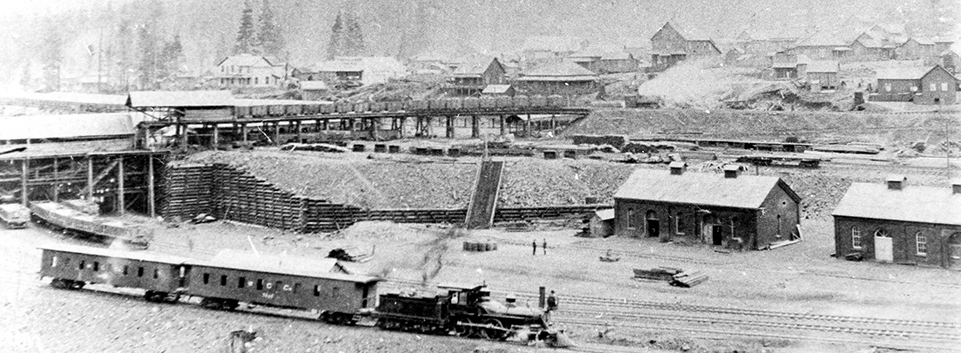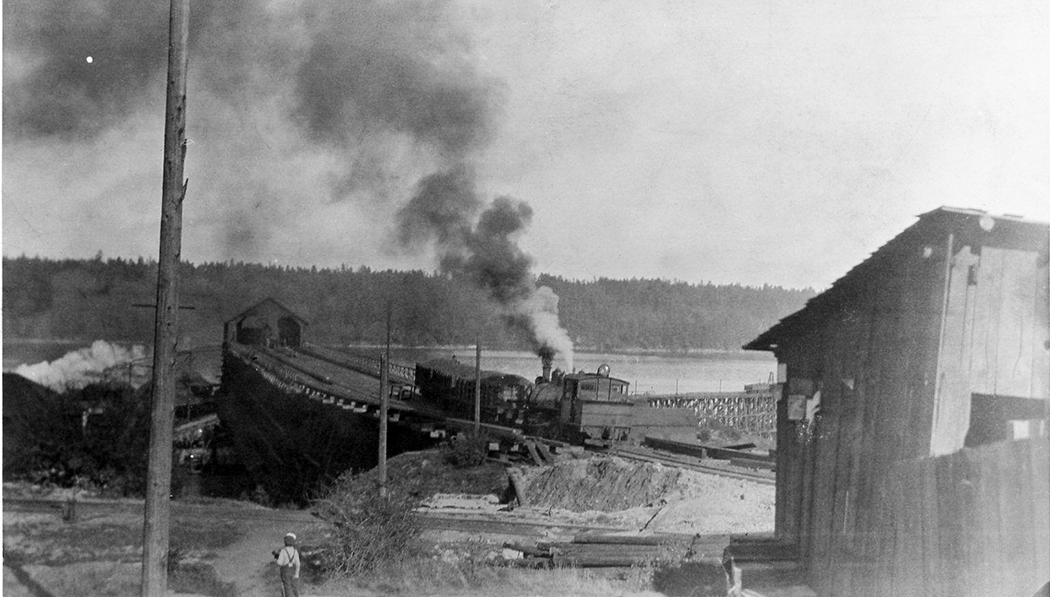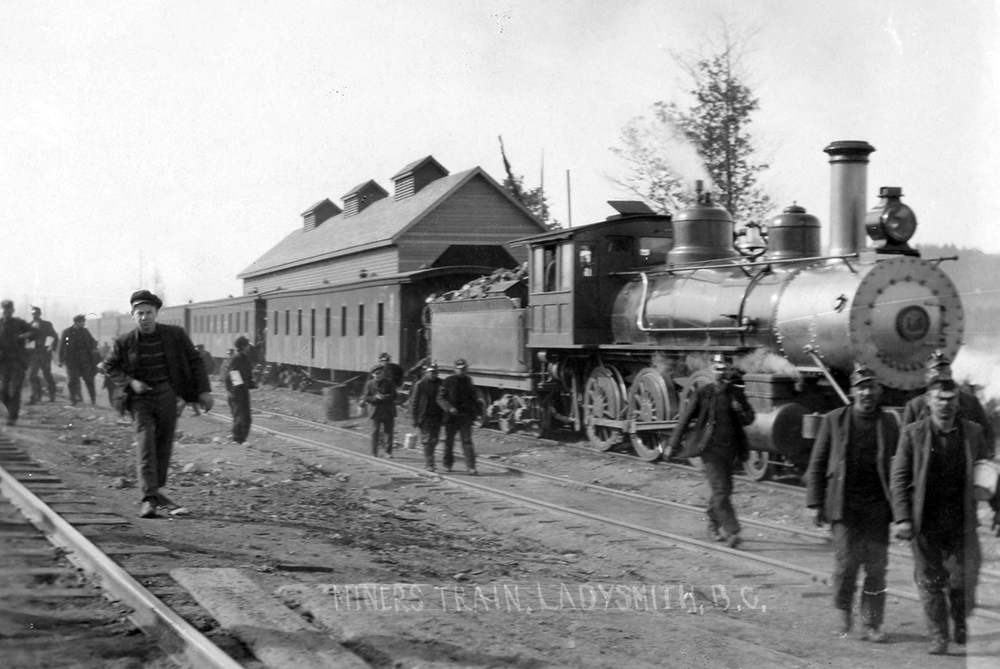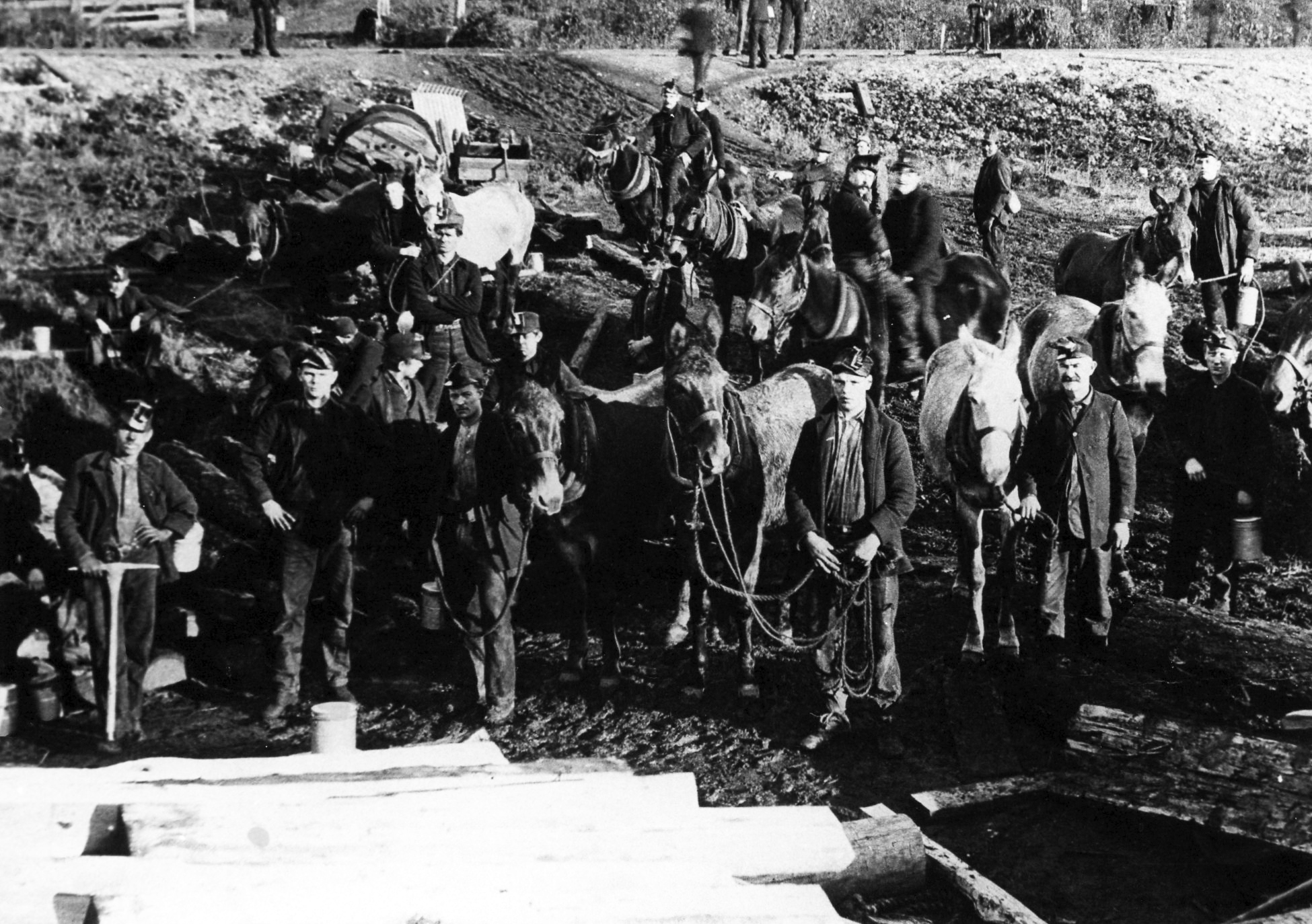Why Our Town Was Founded
Coal is the reason why the Town of Ladysmith on Vancouver Island exists.
In 1851, Chief Che-wich-i-kan of the Snuneymuxw First Nation told the Hudson’s Bay Company in Victoria about the existence of coal at his village. The Company was interested as it needed coal as fuel not only in its forges for ironworking, but very importantly for the increasing use of steam engines, especially in ships. The coal deposits, occurring in a number of seams, proved to be extensive and of good quality: very soon, it was being mined.
Immigrants came from many countries to work in the numerous coal mines that were developed around what became the town of Nanaimo. They brought their culture, including music, with them. The majority came from the British Isles, of which many were Scottish.
VIDEO Celtic Chaos. Enjoy this musical extract from the soundtrack with transcript

Coal loading facilities at Extension Mines with miners’ commuter train to Ladysmith in foreground, circa 1910.
In 1895, a southern extension of the Wellington coal seam, which was being mined in the Nanaimo area, was discovered, and a new mining area, called ‘Extension’, was established. At their maximum extent, the Extension tunnels extended over 3 kilometers from the mine entrance. The extracted coal was brought 16 kilometers south via a railway to huge bunkers and wharf facilities built in 1898/9 at Oyster Harbour for shipping to customers.
The coal was used to power steam engines in ships (including the British naval warships based at Esquimalt) and railway locomotives as well as for other industrial and domestic purposes. It was exported to the B.C. Mainland, the United States (Washington and California) and as far away as Hawaii and Chile.
The owner of the Extension coal mines, James Dunsmuir, decided to build a town to house upwards of 900 employees who worked there. He located the town near his company’s coal wharves at Oyster Harbour. Construction started in about 1898. The miners living in the new town commuted the 16 kilometers every day in special coal company trains to work their 8-hour shifts in the Extension mines: the carriages were very basic, because of the coal dust in the miners’ clothes.
An estimated 10 million tons of coal were extracted from the Extension mines during the 36 years they operated from 1895 to 1931. Much of this was shipped elsewhere through the Ladysmith coal wharves, but some fuelled local industries such as a copper smelter and an iron foundry.
Read the next Story Page ‘How our Town was named’ to understand when and why the new town was named Ladysmith, and why Oyster Harbour became Ladysmith Harbour.




